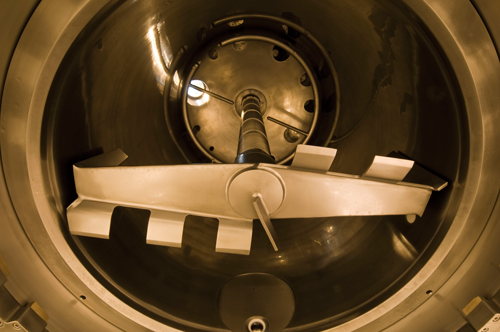Industrial facilities depend heavily on mixers for mixing or blending different materials in commercial settings. One basic type of mixer is the industrial agitator, which mixes liquids together. Industrial agitators are most commonly found in food factories, chemical labs, cosmetic facilities and in manufacturing facilities. To keep the industrial agitator in your facility in a good working condition, you need to have some basic understanding of the machine and know how to best use it.

Industrial agitators are large machines, capable to mix liquids together, increase the heat transfer, promote reactions of chemical substances and to keep homogeneous liquids bulk during storage. The agitation is achieved by creating liquid phase movement, thanks to the rotation of an impeller. The aim of the mixing process is to mix different substances and to improve the efficiency of the reaction by a contact between reactive products. In most cases, combining the ingredients is the initial part of the whole mixing process. Industrial agitators can be operated only by skilled and experienced scientist, who can program and control the mixing speed, time and the temperature of the agitator. Many industrial agitators provide an option for the operator to slowly add additional ingredients into the mixture at set intervals.
Everything an industrial agitator does would be impossible without an experienced scientist or a chemist, because a scientist uses knowledge and expertise to operate the settings of the agitator. The main advantages of the agitator are the volume and the efficiency. With industrial agitator in the facility, the manufacturers are capable of creating larger amounts of uniform substances without spending a lot of money on labor. Therefore, the industrial agitators are essential parts these days in many modern production facilities.
Industrial agitators are most commonly included in scientific applications, especially where mass production of chemical compounds is required on a daily basis. In drug factories for example, once the desired chemical reaction is determined by the scientists, they can program the settings of the industrial agitator in order to get the desired results. Food factories, on the other hand, use industrial agitators for adding and stabilizing preservatives. Most food products contain some chemical stabilizing components in order to be suitable for transportation and at the same time ready for consumption. These chemical components must be mixed into the ordinary composition of the food products, and here’s where the industrial agitator comes into action.
Industrial agitators do not only provide the quickest and proven results, but also give manufacturers the ability to produce a wider range of uniform products. And of course, the agitators reduce the possibility of human errors and guarantee a smooth production of high quality products in no time.















